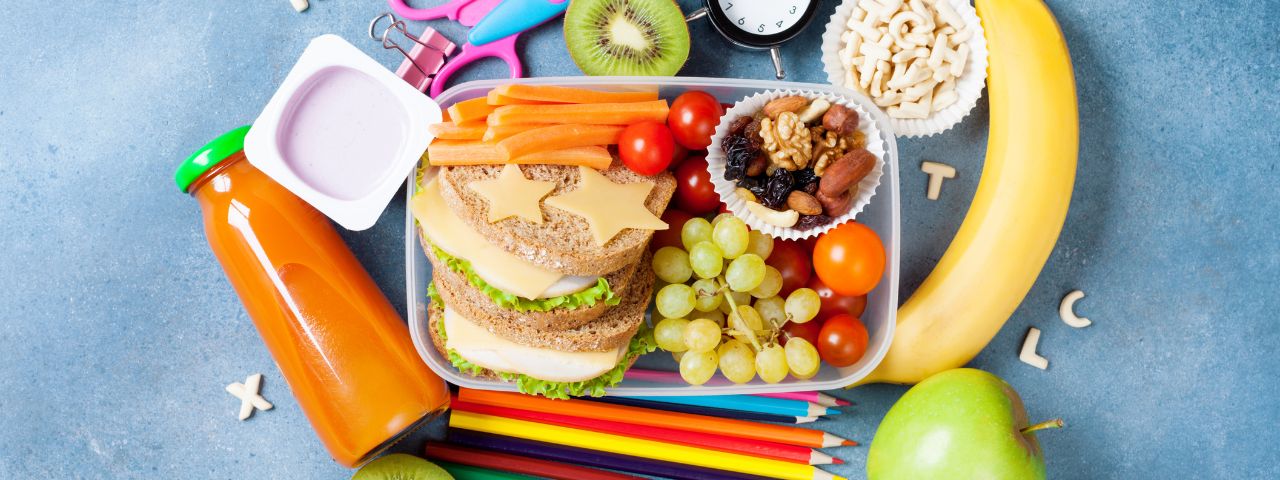
School Nutrition
Guidance, policy updates and actionable resources for schools & districts focused on nutritional standards and access to school meals.
Background
AASA strongly supports the enactment of comprehensive services and programs that encourage children to be healthy.
- Schools will not have to do anything for SY24-25 – everything will remain the same.
- Sodium is far less stringent than the original proposal – there will only be one more reduction.
- Milk and whole grain rules remain the same as now.
- Moving forward states are not required to take fiscal action against districts who are not able to be in compliance due to supply chain disruptions for other issues.
AASA's Position & Priorities
The guiding principles for federal education policy stem from equity and the important role the federal government stands to play in creating equitable learning opportunities for all students. AASA is committed to advocating for better access to school meals and reasonable nutrition standards for students in the public school system.
AASA's priorities are to:
- Support universal school meals on the contingency that such policies do no harm to eligibility for and enrollment in existing federal funding streams serving schools, and fully cover costs associated with the program
- Refrain from increasing the administrative burden related to nutrition eligibility verification
- Ensure that licensing and certification requirements for school nutrition workers are a state responsibility
- Ensure federal school meal reimbursement rates are sufficient to cover the full cost of production
“For years, AASA has been sounding the alarm that when nutrition standards go too far result is meals that students are not willing to consume, undermining the entire purpose of the program – to feed students and ensure they are ready to learn.
David R. Schuler, AASA executive director
Issue Updates
-

November 29, 2022
AASA Urges Inclusion of Child Nutrition Provisions in FY23 Spending BillToday, AASA sent a letter to Senate Agriculture Committee Chairwoman Debbie Stabenow (D-MI) and Ranking Member John Boozman (R-AR) urging them to include critical child nutrition provisions in the FY23 appropriations package.
-

November 15, 2022
USDA Launches $50 Million Grant Program For Schools & Food Industry to Work Together to Strengthen School MealsLast week, USDA launched a $50 million grant opportunity to support collaboration with the food industry to develop nutritious, appetizing school meals for students.
-

July 14, 2022
Healthy Meals, Healthy Kids ActOn July 20, 2022, Democrats on the House Education and Labor Committee released the Healthy Meals, Healthy Kids Act—their proposal for the Child Nutrition Reauthorization.
-

July 07, 2022
USDA Extends Numerous Waivers for Summer 2022Under the authority granted by the Keep Kids Fed Act, USDA issued or extended six waivers for Summer 2022.
Get Involved
Get the most up-to-date information and alerts so you can make your voice heard.
Get the AASA Advocacy App
Additional Resources
U.S. Department of Education Resources
- Public school students eligible for free or reduced-price lunch
- Back to School 2022-2023: HOW TO PRIORITIZE THE HEALTH AND SAFETY OF STUDENTS, SCHOOL PERSONNEL, AND FAMILIES
- Free or Reduced-Price Lunch vs. Direct Certification: Understanding School Lunch Eligibility in the Common Core of Data
- Nutrition Standards for School Meals (Source: USDA)
Resources to Support School Nutrition
- Measuring Student Poverty (Source: Urban Alliance)
- Model Estimates of Poverty in Schools (Source: Urban Alliance)
- Toward a Better Measure (Source: Data Quality Campaign)
- Is Free and Reduced-Price Lunch a Valid Measure of Educational Disadvantage? (Source: Domina, Pharris-Ciuriej, and Sanabria. [2018]. Educational Researcher.)
- Food Insufficiency During COVID-19 (Source: Food & Research Action Center [FRAC])

Superintendent Advocacy at Your Fingertips
Educate. Influence. Impact.
Download the AASA Advocacy App today.
